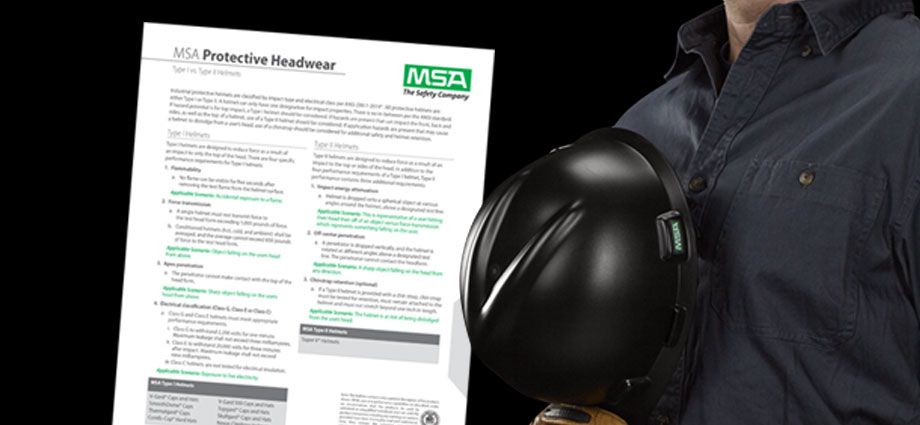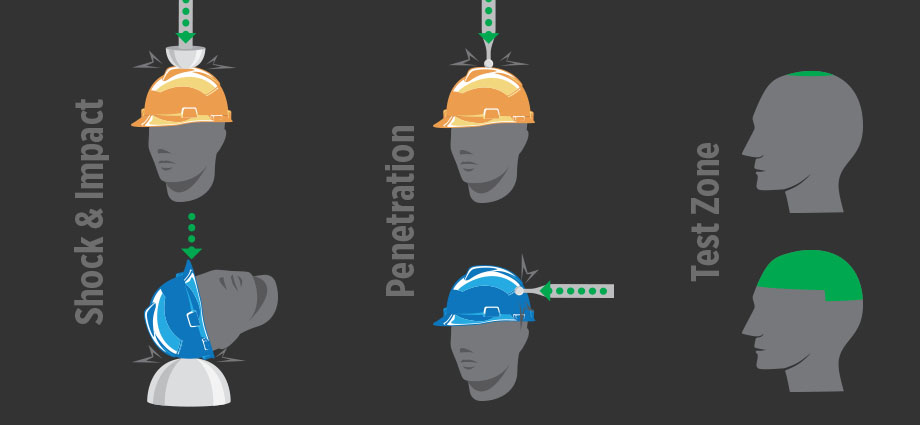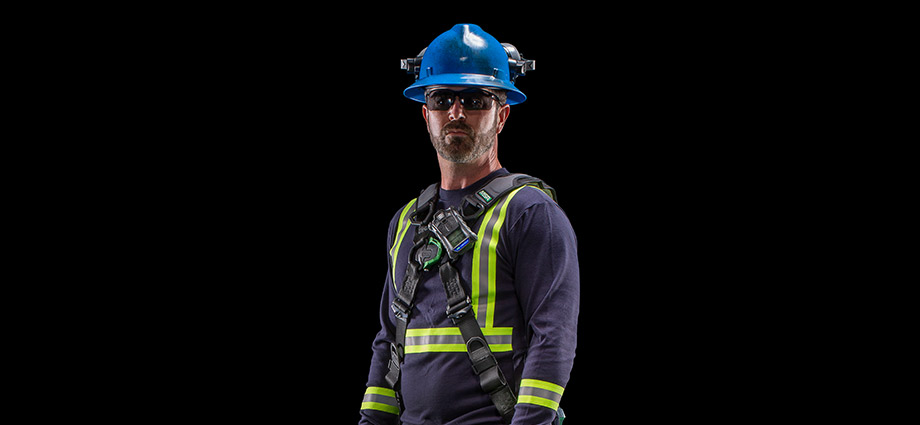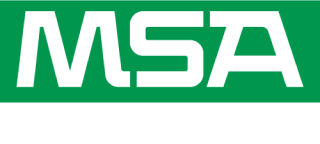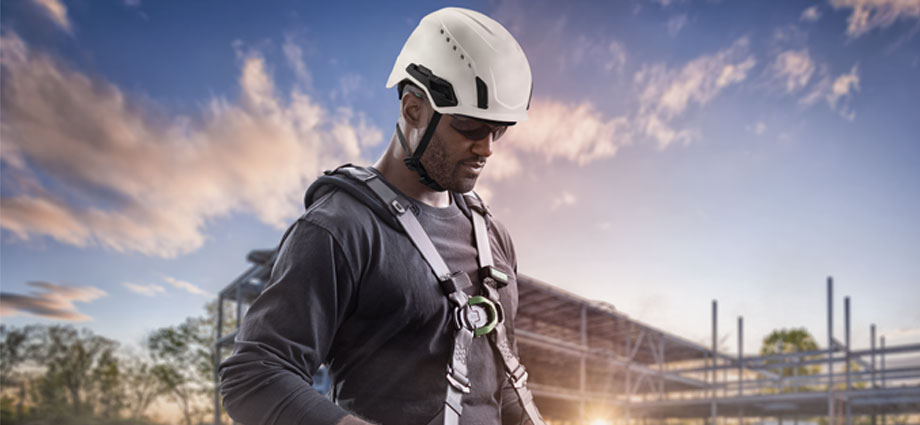
On April 12, 2024, the Occupational Safety and Health Administration (OSHA) issued an updated version of its “Head Protection: Safety Helmets in the Workplace” Safety and Health Information Bulletin (SHIB).1 This version includes updates to the previously issued version, released in November 2023, in order to help clarify some key points about head protection Types, Classes, and considerations when selecting a solution. According to OSHA “With a thorough understanding of the benefits and capabilities of head protection options, employers and workers can make informed decisions on selection and use.”1
The SHIB states that “modern head protection, whether it’s a safety helmet or a hard hat, varies in styles and levels of protection, allowing employers and workers to choose head protection appropriate for the job.”1 This updated SHIB acknowledges that there can be compliance with OSHA’s head protection standards through ANSI Z89.1, meaning all of the hard hat Types and Classes described in the next section are compliant. The updated SHIB also notes that the range and variety of options allow employers and workers to select the appropriate head protection for their jobsite and application, while complying with the requirements of OSHA standards.
Head Protection Types and Classes Included in the SHIB
OSHA recognizes two Types (impact) and three Classes (electrical) of head protection.
These include:
- Type I head protection offering protection from impacts to the top of the head.
- Type II head protection offering protection from impacts to the top and sides of the head.
- Class G (General) head protection designed to help reduce exposure to low voltage conductors and proof tested at 2,200 volts (phase to ground).
- Class E (Electrical) head protection designed to help reduce exposure to higher voltage conductors and proof tested at 20,000 volts (phase to ground).
- Class C (Conductive) head protection which is not intended to provide protection against contact with electrical hazards.
The SHIB also notes that accessories including chinstraps, face shields, eye protection, and hearing protection may also be considered to address specific jobsite and application hazards.
How to Select Head Protection
While OSHA has determined that Type II, Class G safety helmets are the most appropriate type of head protection for its employees, OSHA recognizes that “based on their own Job Hazard Analysis, employers and workers may decide that another form of head protection is for them.”1 The SHIB includes considerations for choosing head protection for:
- Construction sites, especially those with high risks of falling objects and debris, impacts from equipment, awkward working positions, and/or slip, trip, and fall hazards
- Oil and gas, where workers face potential exposure to chemicals and severe impacts
- Working at height
- Electrical work or tasks that involve proximity to electrical hazards
- High- and low-temperature environments
- High visibility for construction and road work
- Specialized work environments that may require integrated face shields, hearing protection, or communication devices.
These considerations are based on specific applications. Because the hazards your team faces may vary, consider whether they would benefit from a head protection solution that is different from what has been highlighted in the SHIB.
Some important factors to keep in mind when conducting a Hazard Assessment include:
- Previous records of head injuries or near misses
- Impact and other risks, including falling objects, hitting or bumping the head, lateral impact, electrical shock, or chemical splash
- Job-related tasks and applications, such as working at height, confined space entry, climbing, or welding
- Environmental conditions such as electrical sources, extreme weather, or high noise
Additional factors to consider when choosing head protection may include comfort and worker compliance and your organization’s customization requirements for PPE.
How to Inspect Head Protection
Head protection is intended for single-use impact protection, so it may not retain its full effectiveness after an incident. Any hard hat that has been struck severely should be immediately removed from service and replaced.
Inspecting your head protection prior to each use and throughout the day can help ensure that its protection capabilities are not compromised, even from what may look like minor damage or a hairline crack.
OSHA outlines general inspection steps and storage guidelines in the updated SHIB:1
- Inspect the outer shell for cracks, dents, or other signs of damage.
- Examine the suspension system (headband and chin strap) for wear and tear.
- Check for labels and certification marks.
- Examine accessories and attachments.
- Check for proper fit.
- Refer to the manufacturer’s guidelines for recommended lifespan or guidance on when to take head protection out of service.
- Clean and dry head protection before storing.
- Maintain a record of each inspection, noting the date, any findings, and actions taken.
Head Protection Options that Comply with the OSHA SHIB
MSA offers a range of ANSI, CSA, and EN approved head protection solutions which meet the recommendations outlined in the OSHA SHIB and address specific jobsite concerns, hazards, and employer and worker preferences:
- V-Gard Hard Hat: Type I hard hat meeting ANSI and CSA requirements, available in full-brim and cap style options. The iconic “V” gives the hard hat a unique profile which enables it to deflect objects and provide added protection in the event of impact.
- V-Gard H1™ Safety Helmet: Type I safety helmet with ANSI, CSA, and EN approvals, the H1 features a low-profile design and is suitable for applications including confined space and working at height.
- V-Gard H2™ Safety Helmet: Type II safety helmet available with optional Mips® brain protection system for industrial safety helmets designed to help reduce the risk of traumatic brain injury resulting from slips, trips, and falls.
- V-Gard C1™ Hard Hat: Type I hard hat featuring ReflectIR™ Thermal Barrier technology to help keep the inside of the hard hat up to 20°F cooler in sunny weather and help reduce worker heat stress.
- Skullgard® Hard Hat: Type I hard hat intended for work in hot industries and environment, such as steel mills. Skullgards are tested with radiant heat loads producing hard hat surface temperatures up to 350°F.
These are just a few examples based on hazards you might experience on your site.
Explore MSA’s full line of head protection solutions and accessories to find the right solutions for your application.
[1] https://www.osha.gov/sites/default/files/publications/safety_helmet_shib.pdf


